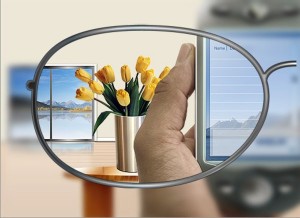Lenses
Spectacle prescriptions can be broken down into three main types:
Single vision lenses: most common in use with clients below 40-45 years of age, these tend to be the standard type of lens fitted. They can be glass or plastic, utlising special thin materials for weight or aesthetic reasons if particularly desired – or employing standard thickness marterials.
Bifocal lenses: tend to be supplied to older clients who require a single solution for both close work and distance. A variety of types can be supplied to ensure the most appropriate solution for your own needs, but also to ensure that your chosen frames can best suit the lens type and combination. A small line is visible separating the near and distance lens components.
Progressive lenses: are a very sophisticated lens type which combines near and distance vision requirements into a single lens (with no visible line). Very easy to move to from a standard single vision lens – or when separate reading and distance glasses have been used in the past. Upgrading from bifocals can take a little more effort on the part of the wearer but progressive (or Varifocal) lenses are a superior solution aesthetically.
All lens types can benefit from a range of surface treatments which are applied before the lens is fitted into the chosen frame. This can include anti-scratch coatings, anti-reflection coatings and tints.
In addition, there are specific types of lenses which offer particular benefits and opportunities including: impact-resistant lenses (for sport or work-related activities); UV lenses (to reduce glare); polarised lenses (for sunglasses) and lenses that adjust automatically to sunlight and lower light conditions.
